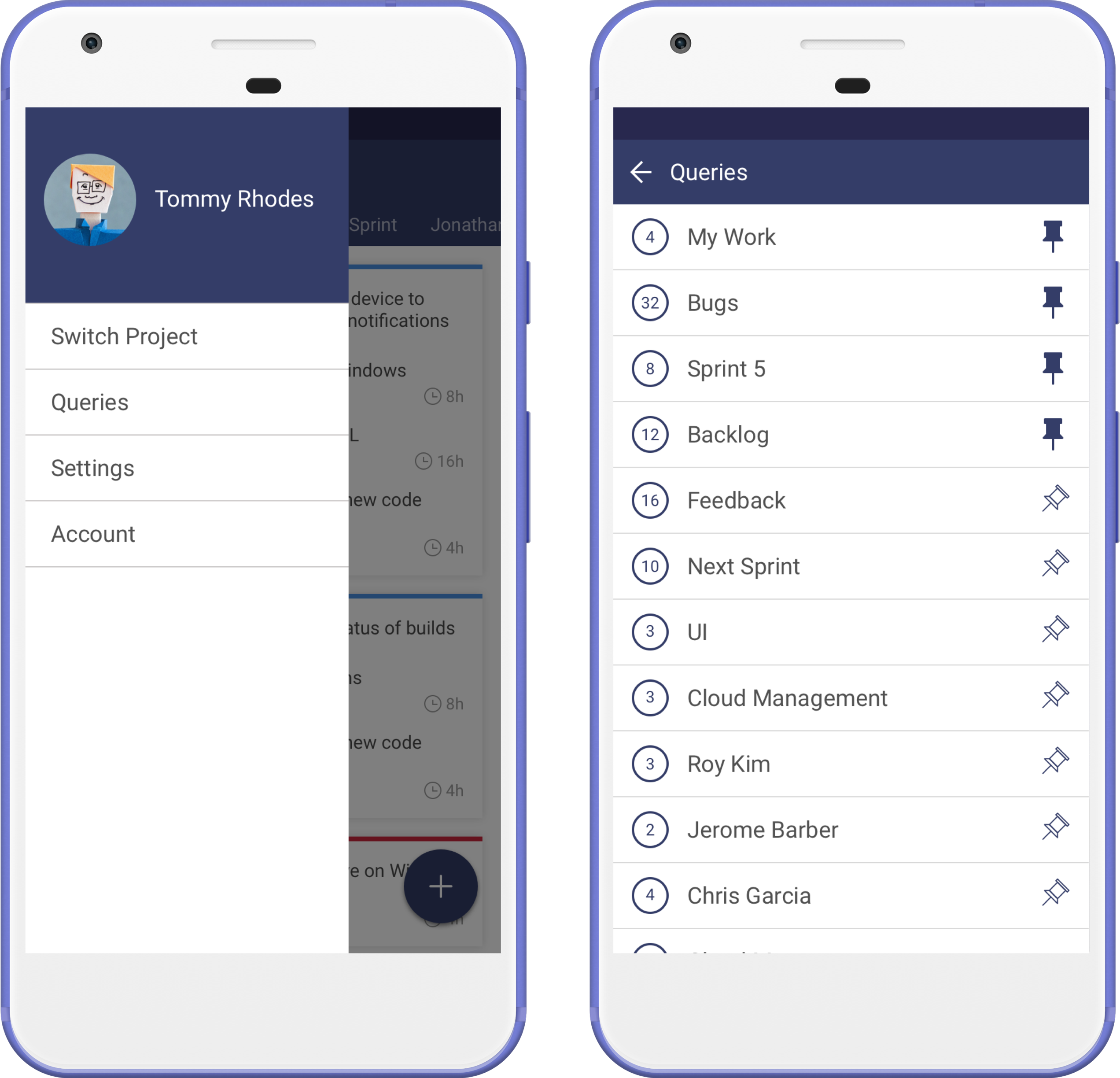
WIS (Work Item Studio) is an Android app that helps developers to manage projects and tasks on the go.
Engineering teams have been using VSTS (Visual Studio Team Services) web app to manage source code and projects on their laptops at the their desks. However, work topics and changes happen unexpectedly in scrum meetings and hallway conversations. It is annoying to remember to update your tasks when you go back to your desk. It is more frustrating when you forget. Work Item Studio, the mobile app, is made to fill in this gap of needs and embrace the dynamic work environment. The app has features and personalized views that tailor to each developer’s habits and needs when they are away from their laptops.
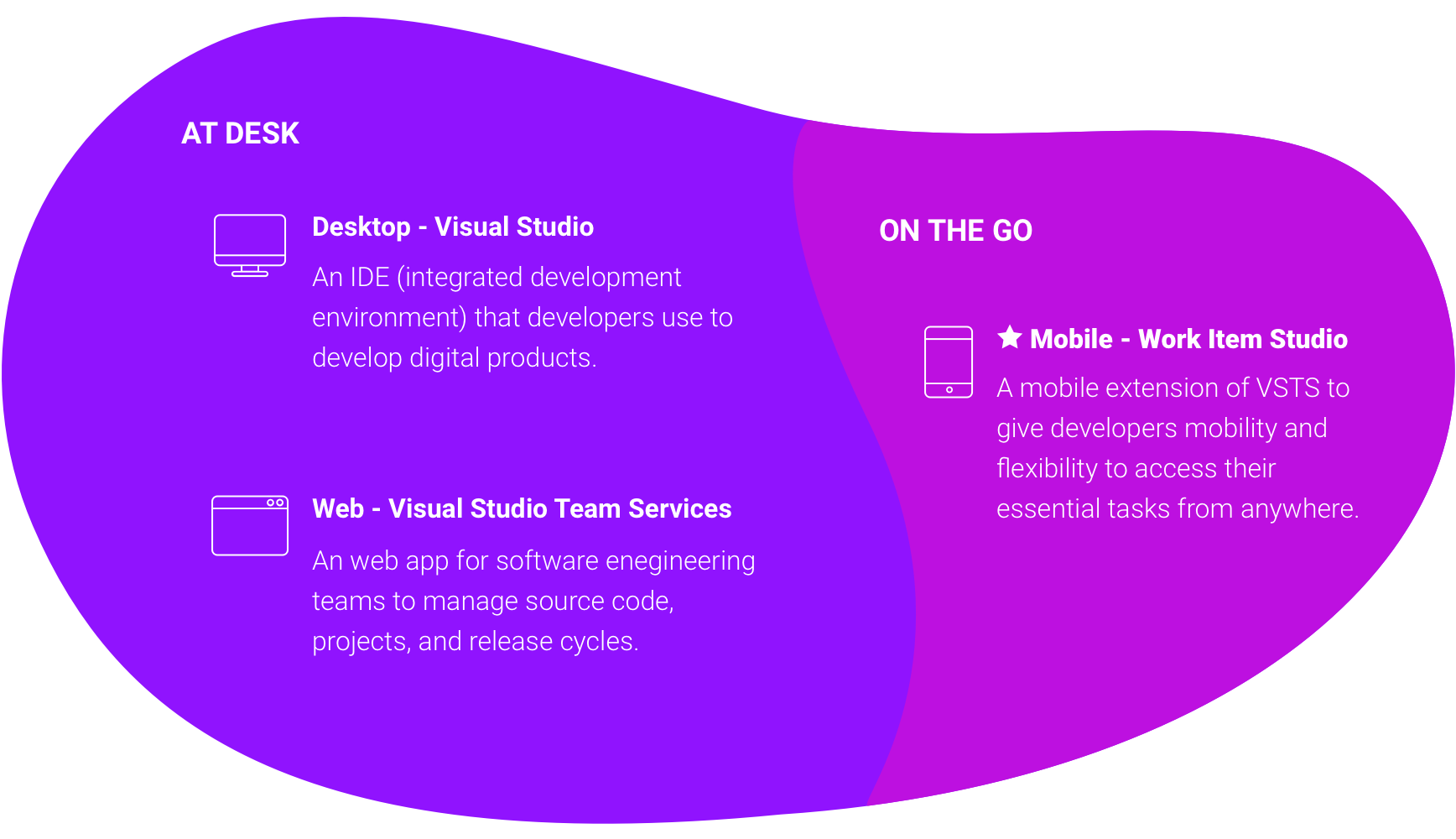
Primary User
Secondary User
The existing Windows App received low user satisfaction.
In my four-month intern, my mission is to solve the navigation problem and discover latent needs, then bring this app to Android so it can benefit more developers. For this project, we were also the users of our product. It helped us empathize with the users, but I also had to keep in mind that we should not just developing for ourselves.
1 Product Designer & Manager (My Role)
1 Visual Designer
6 Developers
Project Management
UX Research
Information Architecture
Interaction Design
Prototyping
Visual Design
Scrum Master
Spec Writing
Product Presentation
As the program manager, I conducted the user research, set a vision for the product, prototyped, tested, and designed. In addition, I was the “octopus” that connected stakeholders, users, and the developers together. I effectively communicated my research findings with the team and encouraged cross-functional collaboration to brainstorm on ideas. I also supervised the app execution and learnt that execution is just as important as a great design.
First, I conducted an information architecture analysis on the existing app to pinpoint why the current navigation structure is confusing. The information architecture of the previous app did not match the information architecture of VSTS web app. This discrepancy disrupted users' mental model and caused cognition load as they switched between the web app and the mobile app. To correct the navigation, I brainstormed some new layout options and conducted paper testing.
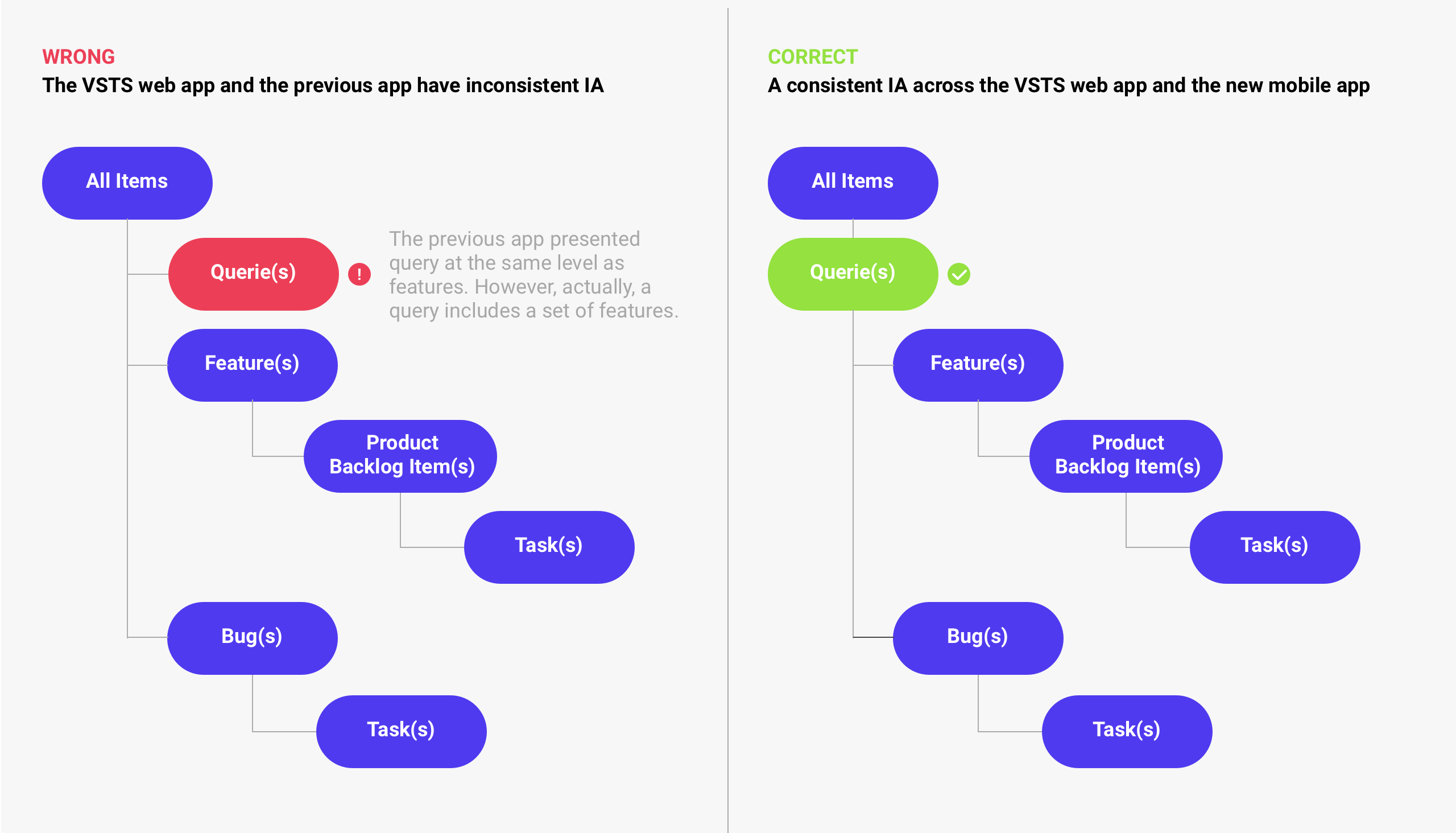

After user research, I ran a value proposition exercise to define the mission of our product. This exercise narrowed down the problems and ideas we needed to focus on. It reminded us to build the right product and not fall into feature creep.
Developers mainly care about items assigned to themselves. The homepage provides quick access to their active tasks and gives context of the tasks they are working on.
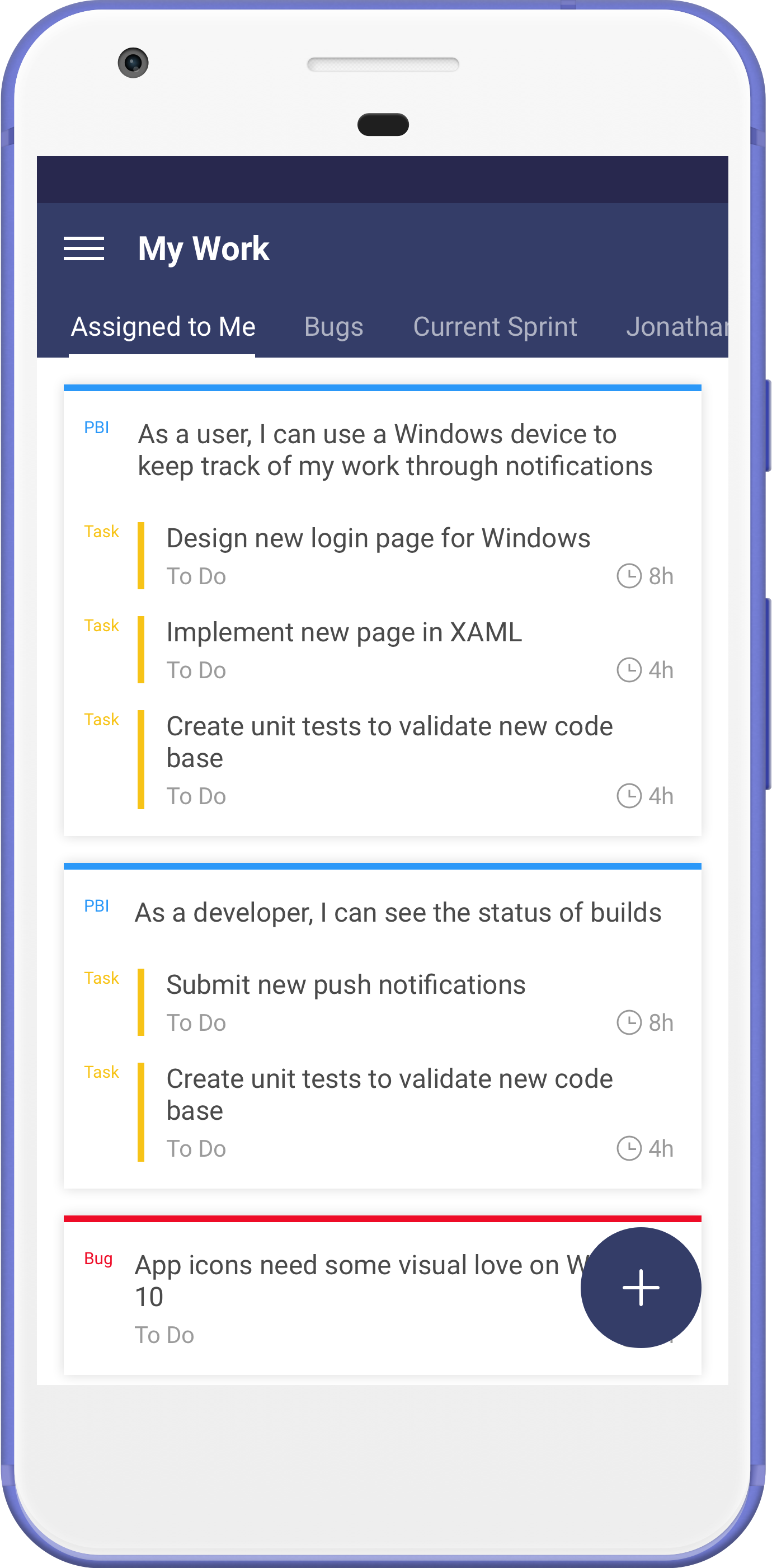
A lot of developers’ projects are mobile products. During app testing, it is convenient to screenshot the bug and log the bugs on the phone.
For PMs, ideas can pop in their heads anytime and anywhere. Then they can add the idea to the backlog on their phone.
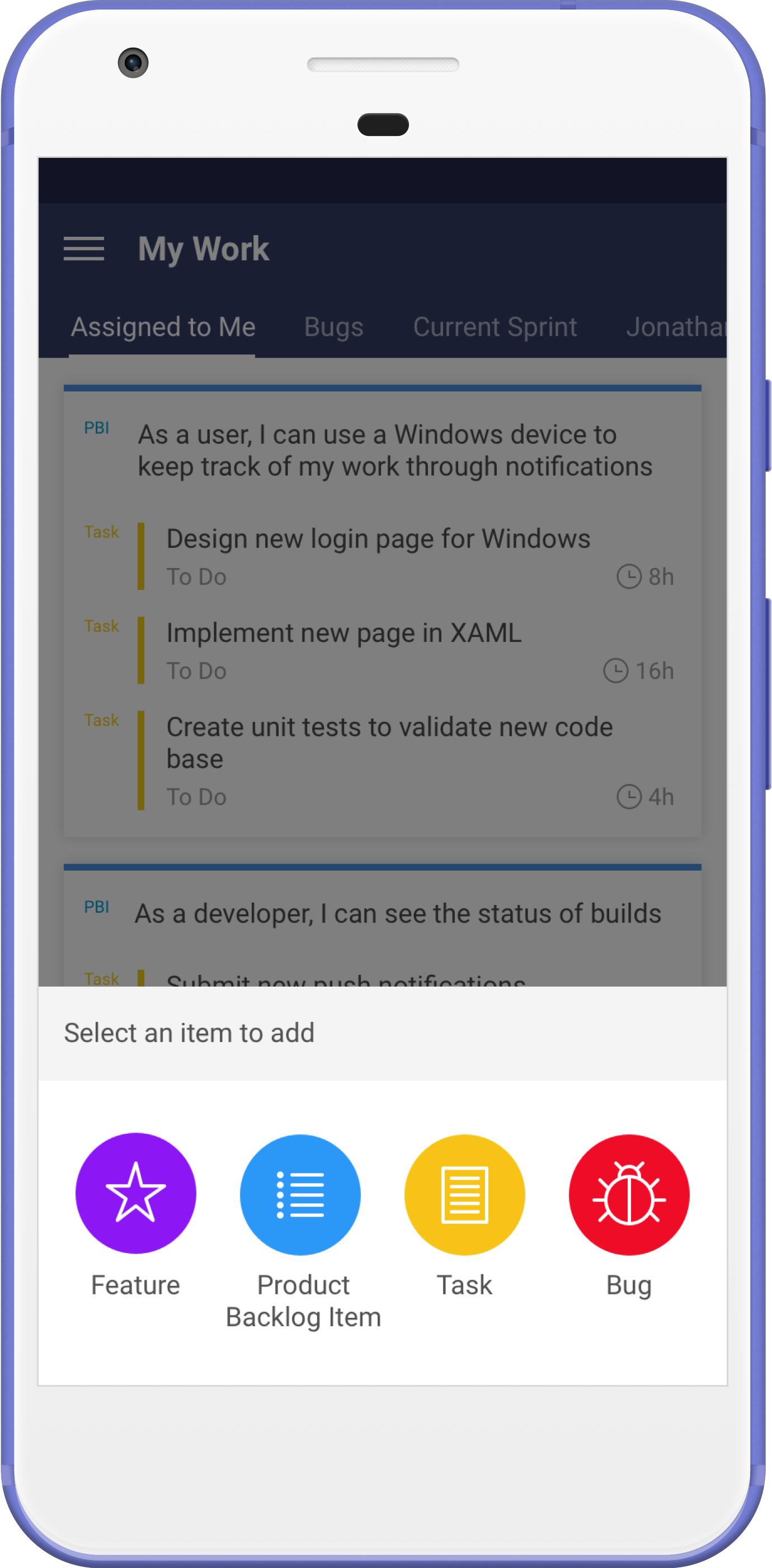
During the research, I discovered that PMs assign tasks to developers and notify them in a separate email. It is inconvenient and it is easy to forget.
Now, when developers have a new task assigned, they will receive a push notification on their phones. This guarantees that developers stay in the loop.
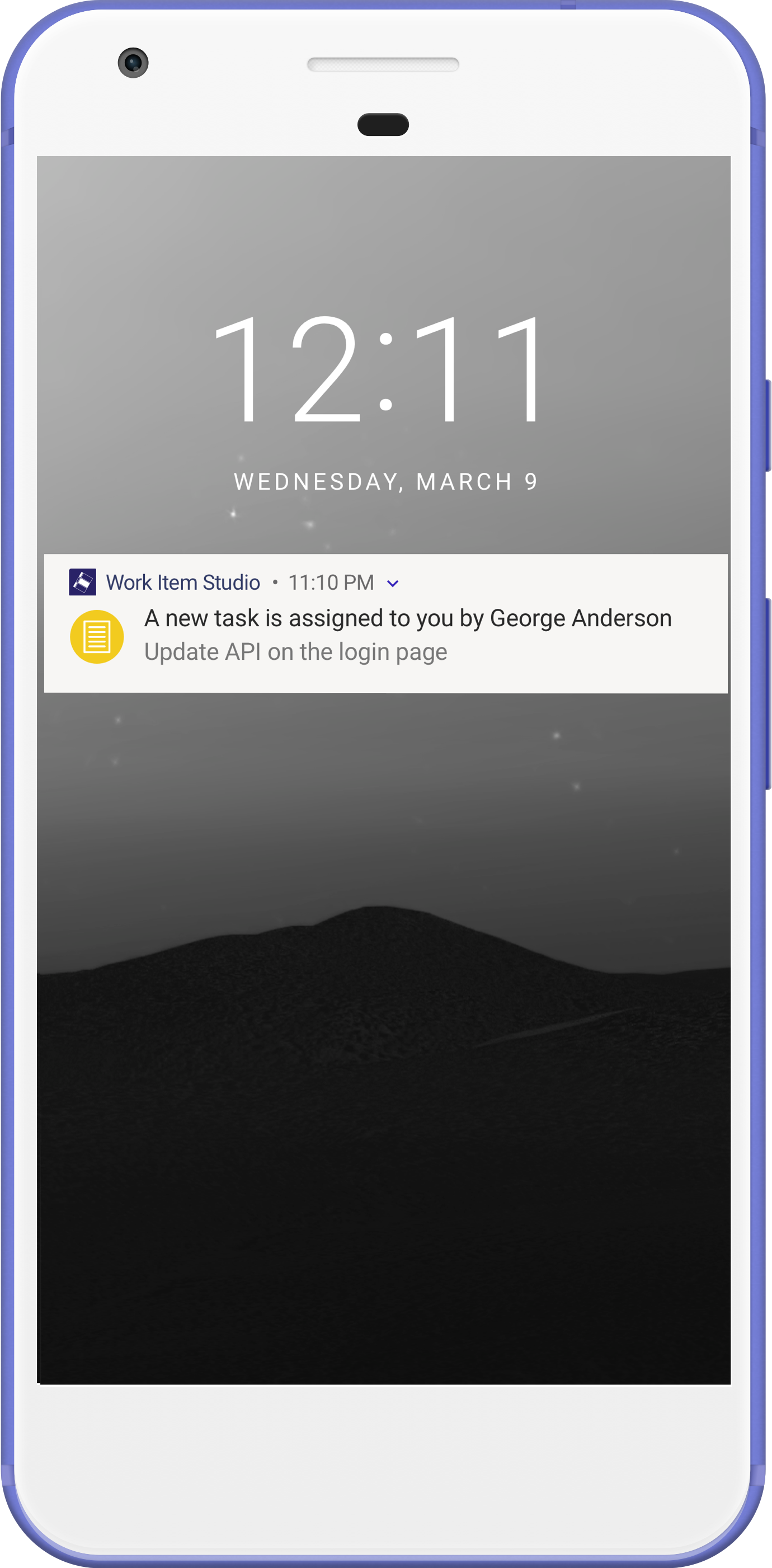
During the observation session, I discovered that developers typically sit and wait for a build to finish. The wait time is too short for another task. However, the suspense leaves developers too uncomfortable to leave the desk and take a break.
This feature enables the developers to stay connected to the builds while stepping away for quick breaks.
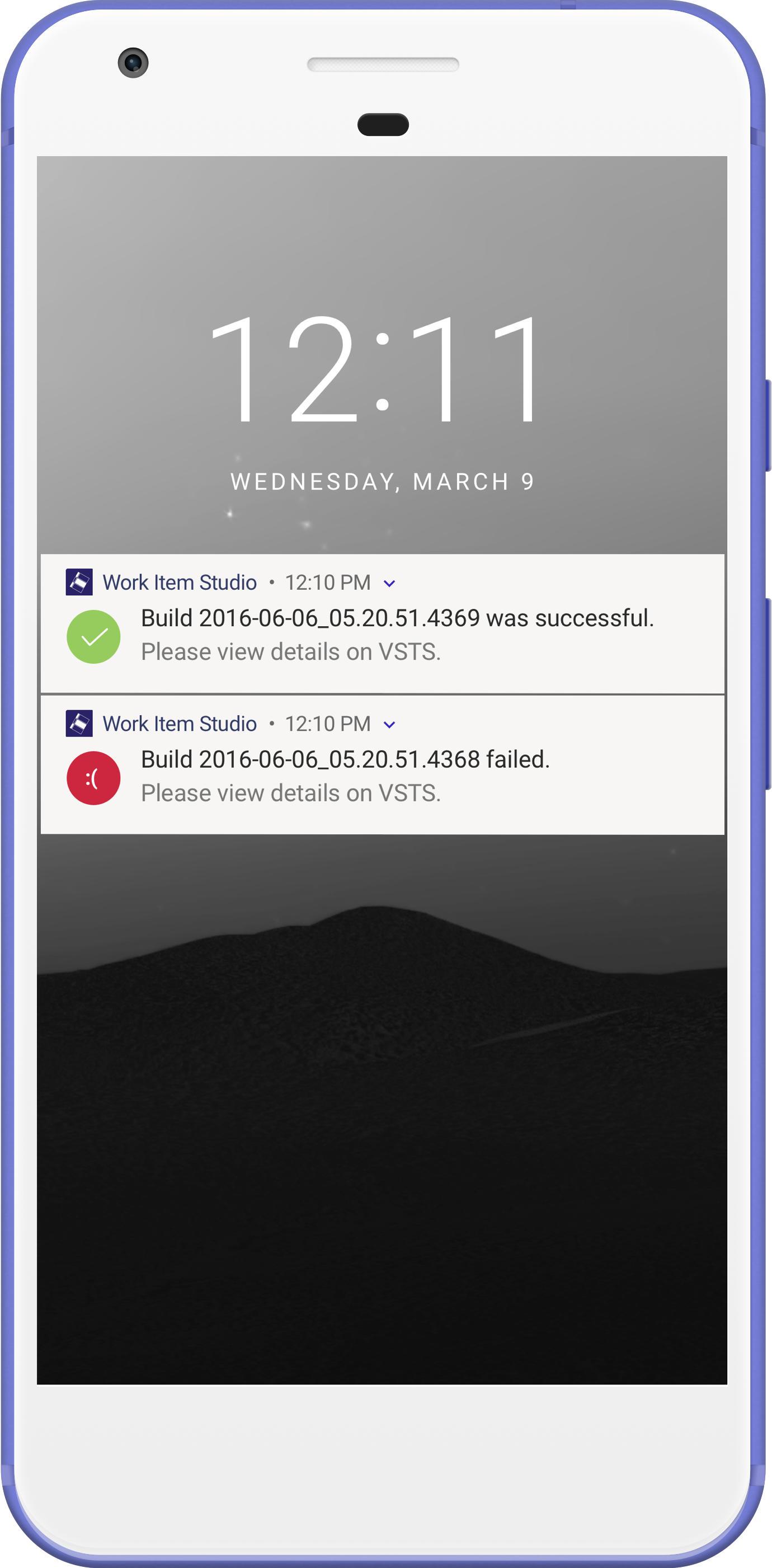
A query is a filtered list of work items. In addition to work assigned to an individual, every developer and PM has different lists of work items they care about. For example, an engineering lead may want to keep track of all bugs. A PM may want to see the entire backlog.
Users can pin their most frequently used queries to the homepage and easily swipe through all their pinned queries.
